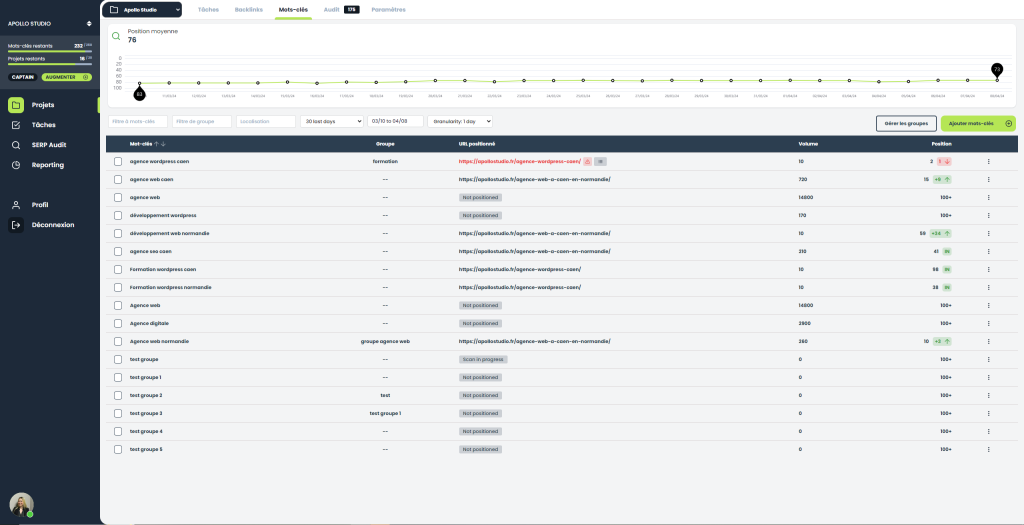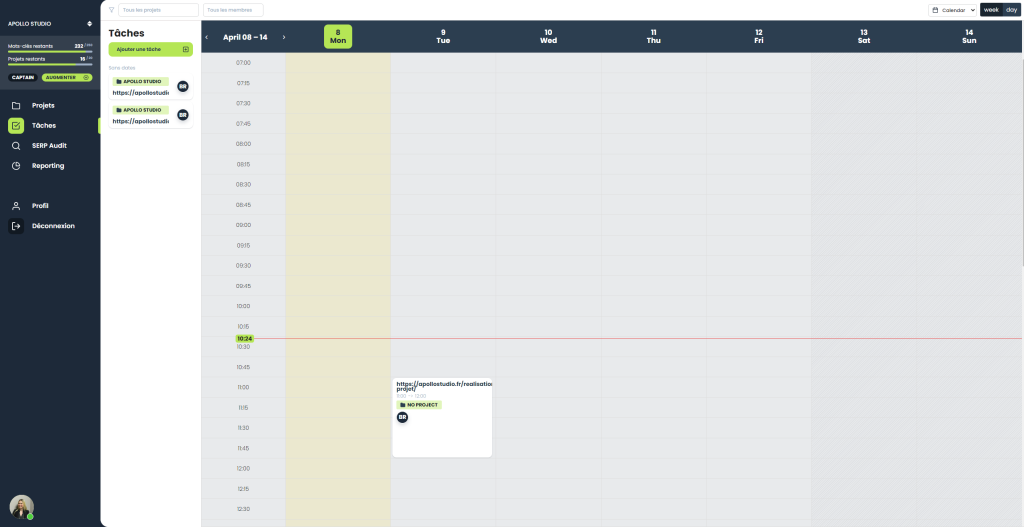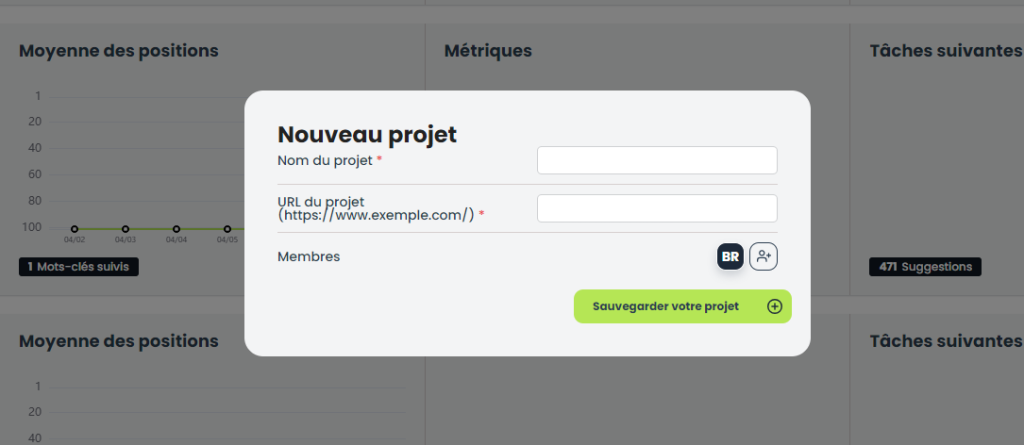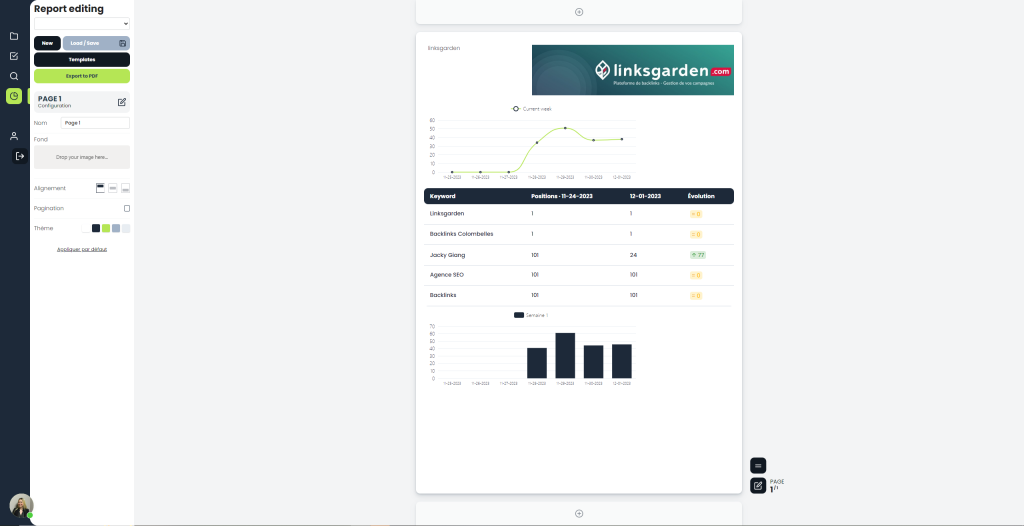SEO content planning: how to create a high-performance editorial strategy?
An effective content strategy can’t be improvised. To boost your visibility and generate qualified leads, you need to plan the production and promotion of your content in advance.
According to a Hubspot study, 64% of marketers consider editorial planning to be the most critical factor in the success of a content strategy.
Yet only 35% of companies have a formal calendar for their marketing and editorial content. Isn’t that just the tip of the iceberg?
We’ve decided to tell you all about it: from why to how to implement SEO-optimized content planning and content marketing. On the program:
- The benefits of editorial planning
- Steps to building your editorial strategy
- Tools for planning your content
- Best practices for optimizing your calendar over time
Why plan your editorial content?
Are you still wondering why? We could list 1,000 reasons, but we’ll start with these:
- To produce content that is aligned with your long-term strategy. An editorial calendar ensures thematic and editorial consistency between different content.
- Respect a regular publication cadence. By scheduling your content in advance, you’re sure to publish frequently to build audience loyalty.
- Optimize natural referencing. Google rewards websites that consistently publish new and fresh content. Planning ahead helps maintain this rhythm.
- Better involve your team in your content strategy. A schedule helps to allocate roles and responsibilities.
- Analyze and measure the performance of each piece of content. With an overview, you can track the results of each format, subject, etc.
- Avoid publishing at the last minute. Scheduling allows you to anticipate and optimize content production.
- Make sure you don’t run out of ideas. Avoid gaps in your editorial strategy.
The editorial calendar is the cornerstone of a content strategy that converts!
SEO is a team effort. Impossible without a collaborative tool! With its integrated messaging and notifications, SEMNAUT streamlines communication within your projects. At last, you can save precious time and concentrate on your strategy!
How do I draw up a good editorial plan?
A well-constructed editorial plan is essential for managing your content strategy over the long term. Here are the 5 steps to creating a useful editorial plan:
1.Define your personas and their intentions
Start by identifying your personas, their characteristics and the questions you need to answer at each stage of the buying journey.
2.Audit your existing content
Analyze your existing content:
The most popular,
The least successful,
Opportunities for improvement…
This audit will enable you to identify your strengths to consolidate and your weaknesses to correct.
3.Define your objectives
Set your business and marketing objectives:
- Increase your traffic by X%,
- Generate X leads per month,
- Increase brand awareness,
- Animate your community on social networks,
These objectives will guide your strategy and editorial calendar.
4.Brainstorm content ideas
List all the ideas for topics and types of content relevant to your personas. Use SEO tools to find high-potential themes. To never run out of inspiration, list :
- Frequently asked questions,
- Keywords to target,
- Key dates and events in your sector,
- Relevant formats (product sheets, tutorials, e-books…).
5.Rank and prioritize content
Rank your ideas both quantitatively (search volume) and qualitatively (business relevance).
6.Plan content in a calendar
Spread your content over the year, anticipating major projects. Choose the most appropriate tool: Excel, Trello, Asana…
7.Define a publication frequency
Publishing 1 or 2 times a week is an excellent way to get started. Once you’ve got the hang of it, you can always increase the pace!
8.Allocate roles
Define who does what between writing, proofreading, promoting on networks…
9.Analyze and adjust regularly
Follow analytics to identify the best-performing content and readjust your planning.
A content strategy involves the whole company!
Tools and methods for SEO content planning
To set up your editorial planning, you can use :
- An Excel spreadsheet: a simple and effective way to get started.
- A project management tool (like Semnaut 😎): advanced features to boost productivity.
- An online calendar editor: ideal for team collaboration.
Whichever solution you choose, be sure to include for each piece of content:
- Title,
- Format (blog article, white paper, infographic…),
- Publication date,
- Contributors involved,
- Target keywords,
- Marketing objectives.
This metadata will help you optimize your calendar over time.
Juggling Excel, Analytics and other time-consuming dashboards? No more! Thanks to its intuitive interface, SEMNAUT centralizes all your key SEO data in one place. So you can focus on your core business!
Optimizing your content planning over time
Once your editorial schedule is in place, how can you improve it?
- Adjust according to the results: increase the frequency if traffic is high, or change the format if leads are slow to come in.
- Enrich your content ideas: draw on current events in your sector, prospect questions, new trends…
- Vary formats according to their performance.
- Involve your audience: polls, votes, contests… to find new topics.
- Automate the promotion of your content on networks to save time.
Remember: taking the time to plan your editorial content is an investment that will develop your entire marketing strategy.
Semnaut, the time-saving SEO project management tool
Optimizing a website’s search engine optimization (SEO) is an in-depth process that requires organization and method. Tools like Semnaut are here to make the task easier! With Semnaut, you can save precious time on :
- Keyword position tracking: add your sites and keywords for automatic tracking of positions in the SERPs.

- Task planning: draw up a detailed schedule of your SEO actions and monitor their progress.

- Team collaboration: share comments, files and notifications to streamline workflows.

- Reporting: instantly generate customized reports for your customers.

With features designed for SEO professionals, Semnaut will make your project management more productive. You’ll be able to concentrate on high-impact tasks without wasting time!
and discover for yourself the potential of a complete SEO tool.
What you may be wondering…
Do you have questions about best practices and tips for improving the visibility of content in search engines? You’ve come to the right place!
What is SEO content?
SEO content is content that has been optimized for search engines like Google.
- It targets relevant keywords with good search intent, and places them naturally in the text.
- It responds precisely to the queries and needs of Internet users for these keywords.
- It brings real added value to the reader through informative and engaging content.
- It follows good technical SEO practices (optimization of title and meta description tags, presence of keywords in URLs, use of semantic elements such as H1-H2 tags, etc.).
- It is optimized for mobile reading and referencing.
- It encourages readers to interact and share content.
- It is regularly updated and enriched.
- It complies with search engine quality guidelines.
SEO content combines both editorial value for the user and behind-the-scenes technical optimization for SEO. The two complement each other to create content that converts.
How do you create a content plan?
- Target relevant keywords: Do keyword research to identify those with good search volume and little competition. Tools like Google Keyword Planner can help.
- Define the precise subject: Choose a specific angle related to your keywords, which answers readers’ intentions and questions.
- Write a catchy title with keywords: Work on your title to make people want to click, while optimizing with your target terms.
- Write a meta description that arouses interest: Summarize the article’s content and its key benefits for the user.
- Structure the article with headings: Use H2 and H3 tags to structure your content and improve readability.
- Optimize images: Add high-quality, optimized images (naming, size, etc.).
- Place a call to action: Encourage visitors to comment, sign up, buy, etc.
- Schedule network promotion: Schedule posts on your social accounts to amplify your content.
By following this method, your website will gain in impact, traffic and conversions!
How to organize your content?
- Categorize your content by theme or topic to make it easier for your readers to navigate.
- Create content clusters around keywords or related queries to reinforce their effect.
- Structure your articles and pages with headings (H2, H3 tags) to enhance the user experience.
- Prioritize your content by starting with a comprehensive main page, followed by more specific sub-pages.
- Highlight your best content in your navigation menu and home page.
- Clean up and remove obsolete or poorly performing content on a regular basis.
- Add internal links between your content to improve navigation.
- Insert relevant visual and multimedia elements to make your content more engaging.
- Optimize your URLs and page titles with your target keywords.
- Write for both visitors and search engines.
How to carry out an SEO site audit?
Performing a complete SEO audit of your website is essential to identify areas for improvement. Here are the 7 steps to follow:
- Analyze technical performance (speed, responsive, security, etc.)
- Check on-page optimization (titles, meta tags, content, etc.)
- Audit netlinking (inbound link profile, anchor text, etc.)
- Study analytics (organic traffic, keywords, etc.)
- Benchmark competition (backlinks, positioning, etc.)
- Detect indexing problems
- Synthesize results and draw up an improvement roadmap
SEO is a never-ending process’optimisation. Impossible de rationaliser sans une analyse globale ! Grâce à son audit SEO intelligent, SEMNAUT détecte vos points faibles et vos meilleurs leviers. Enfin une visibilité accrue en ciblant les optimisations à fort ROI !
